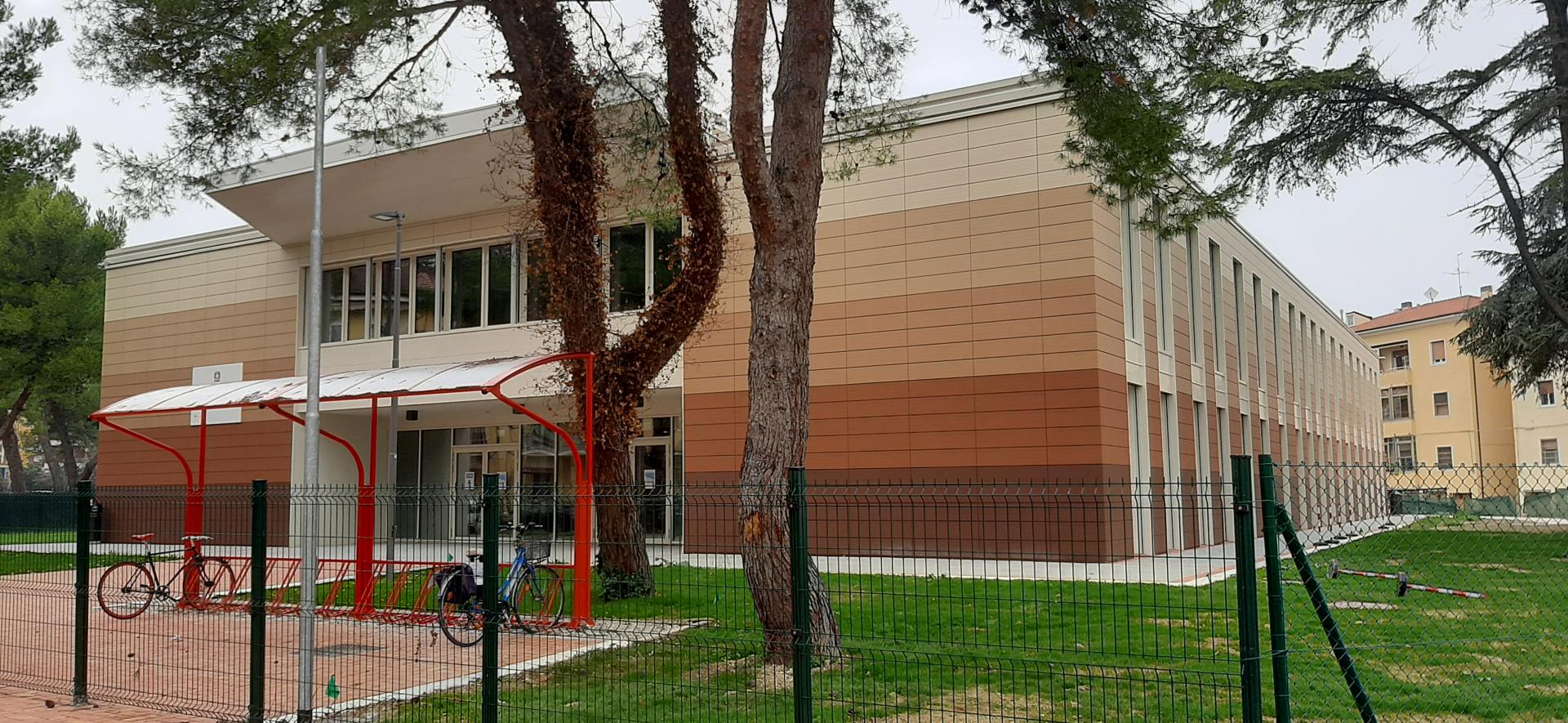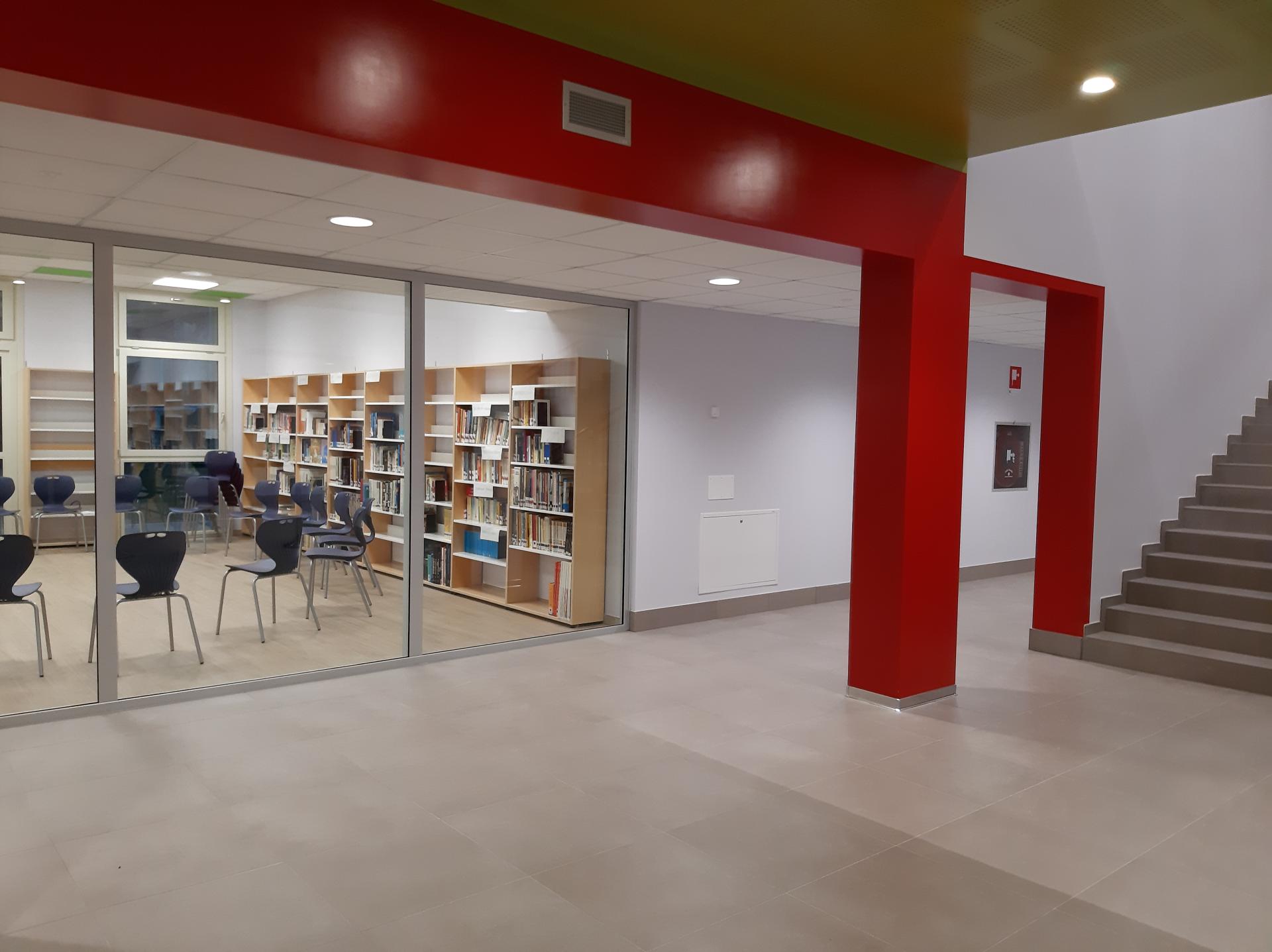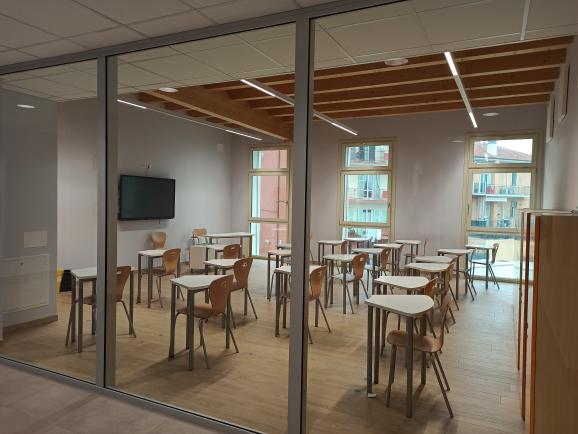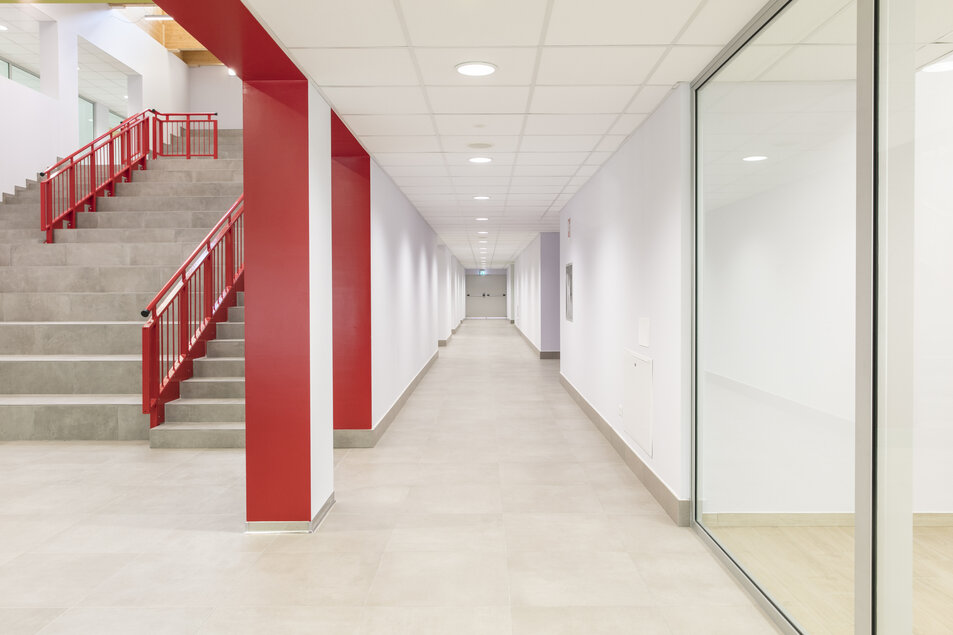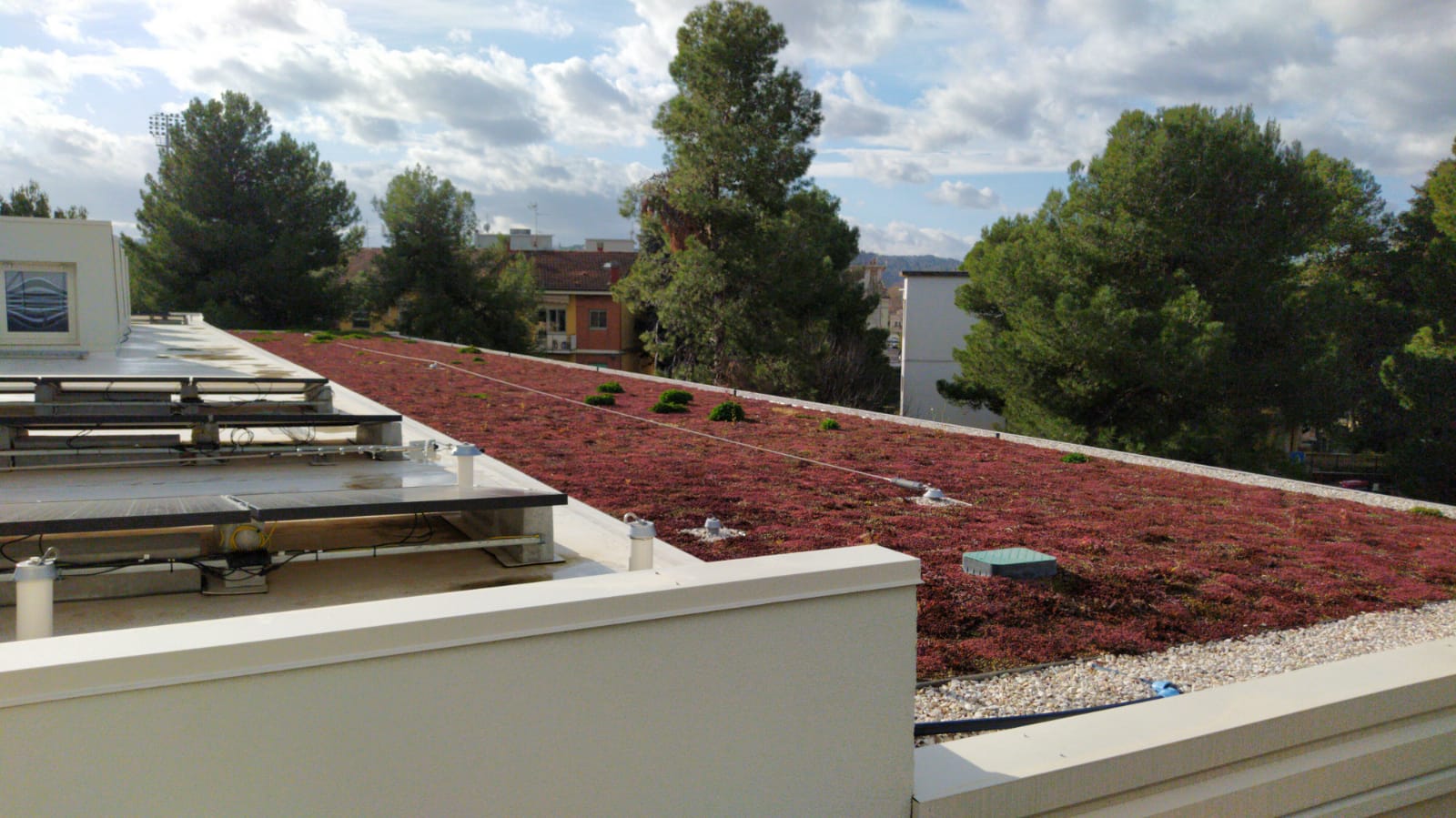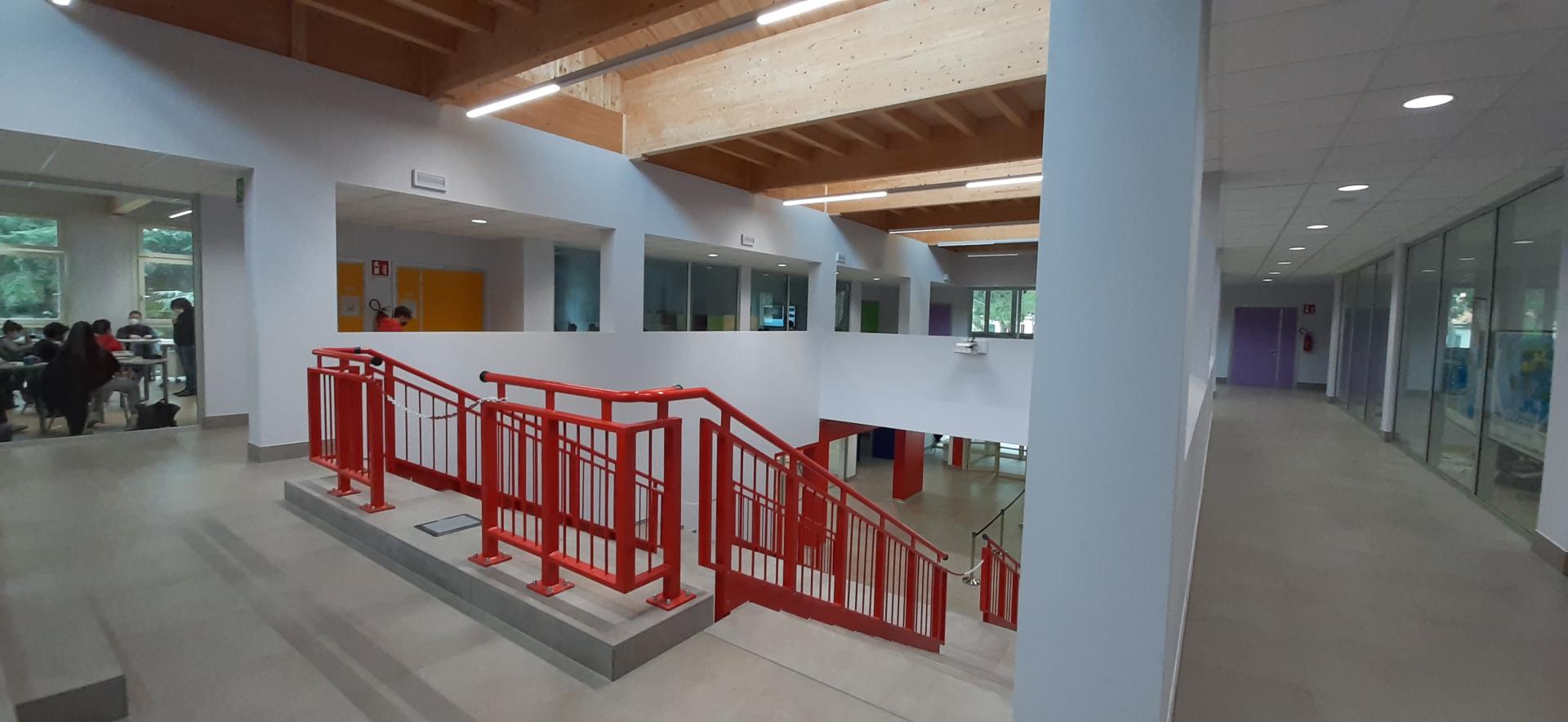Saving planet school for all
Basic information
Project Title
Full project title
Category
Project Description
This new school is built on an abandoned urban area. By reusing this abandoned area, the school demonstrates a practical approach to social sustainability, not only as an excellent green building. It's a pilot project with the aim of encouraging a holistic approach towards circular economy principles to ensure the building design responds to environmental protection, health and well-being, and create a sense of community.
Geographical Scope
Project Region
Urban or rural issues
Physical or other transformations
EU Programme or fund
Which funds
Description of the project
Summary
Since the beginning, the decision of the municipality was made to reuse the existing site for a school with zero land consumption by redeveloping the abandoned urban area and replacing three old army barracks built in 1950 with the new middle-school.
This school building excellence is the result of the ambitious commitment of Pesaro municipality to preserve the environment and tackle climate change.The City of Pesaro has refocused the mandate of local construction on efficiency, sustainability, and responsibility.
In 2017, the City of Pesaro launched a pilot project with the aim of encouraging a holistic approach towards circular economy principles to ensure the building design responds to environmental protection, health and wellbeing and other social considerations
The ambition of Pesaro City is to accelerate the transition towards a circular economy, enabling construction firms to use a new system beyond the current outdated ‘take-make-dispose’ model and contribute to mainstreaming the circular economy concept within and outside the city. Instead of taking a traditional approach to developing works procurement, the city decided to adopt a more circular approach which would be to build a sustainable new school using the current asset, being the abandoned area. The intent is to optimise circularity and enhance the use of sustainable building material and technologies, save raw materials and minimise waste from the construction of the building
The analysis of not only educational needs but also citizens expectations is the central theme: to make the building more circular in terms of its functionality and make sure that it can be used by everyone all day, every day to become a wonderful community space for all the citizens. The general opinion is that this school creates an environment friendly space where all the final users are aware of being part of a community and can understand how it is important the relationship between the human being and the environment
Key objectives for sustainability
The building provides the first concrete example in mainstreaming circular practices in public procurement. The project is successful because it achieves the goal of a building that is extraordinary in every sustainable environmental certification scheme evaluation area and the records achieved are the confirmation of this approach. The innovativeness of this project is to take into practice circular principles within the public procurement process and ensure that the procedure runs efficiently and obtains the expected results based on environmental and social requirements.
This project also demonstrates that the Green Public Procurement process where environmental requirements are made mandatory within the tendering process using predetermined award criteria is essential for delivering environmental social value, influencing the market towards sustainable materials and products, whilst also improving new skills on green jobs.
The call for tender describes technical specifications and provides measurable requirements against which the tenders can be evaluated. Performance-based criteria describe the expected results and which outputs are mandatory. In the case of this project, two criteria were selected as mandatory: (a) obtaining a nZEB school and (b) providing the environmental energy certification using the LEED certification scheme, achieving at a minimum, the LEED Gold certification.
As a result, the tender includes technical specification on energy efficiency, product lifecycle, waste management, water efficiency, with attention paid to internal comfort to create the best indoor environmental conditions for the students and teachers. It is relevant not only the energy consumption reduction but also the indoor quality for the students and staff through better acoustics, air quality and thermal comfort requirements. These results are guaranteed by the LEED v4BD+C with the score of 88 points.
Key objectives for aesthetics and quality
The intent of design is to optimise circularity. The analysis of not only educational needs but also citizens expectations for use was the central theme: to make the building more circular in terms of its functionality and make sure that it can be used by everyone all day, every day. To respond to these needs, the entrance is a big hall to encourage circulation and interaction, so people can meet others and stay to chat. To optimize space, this big hall has been planned as a mixed-use space that can be used like a conference hall by teachers and citizens like. The design of the circulation pattern itself encourages people to sit down and use the circulation space. The shape and position of the building was studied and orientated to best exploit solar radiation and optimize the free solar gains and natural lighting and shading, thus optimising passive design considerations
The coloured façade is composed of a modular system of porcelain stoneware and finished with earthy colours introducing a smoothly playful dash of colour in the streetscape. The characteristic colour provides a strong and recognizable identity and establishes the school as a playful, eye-catching beacon for this vibrant neighbourhood
The shape and the position of the windows create an amazing relationship between outdoor and indoor space without seamless perception of space to improve well-being as well as improve psychological outcomes such as moods, feelings and positive attitudes towards learning and teaching.
The walls of the classroom are made by glass, and this allow to create a sense of community among students that belong to different courses. Such use of the windows and the glass-walls enable also to get the best environment thanks to the artificial and natural lighting control.
By opting for a compact volume, the design was managed to minimize the footprint and avoid further densification of the neighbourhood and provide ample outdoor playground for the children with sport facilities.
Key objectives for inclusion
Residents' meetings were held to base the project not only on end users' demands but also on residents. Teachers and students were involved in the design planning of the outdoor area, and teachers in the design planning for achieving the educational goals. Therefore, a library is available not only to the school, but to the entire community, the canteen is scheduled to be used by children from the nearby primary school. Questions have been posed to teachers, students, school assistants, and parents to obtain feedback. All stakeholders appreciate the brightness of the natural and artificial light as desired; the acoustic comfort is due to any background noise in the classrooms or any noise disturbance from outdoors; the thermal comfort is tailor-made in every classroom thanks to the sensors and the view of the park surrounding the school
The students appreciate the glass walls of the classrooms that allow them to see into other classrooms that generates a sense of community. What is most appreciated is the airflow quality, which is achieved by mechanical filtered ventilation with a CO2 sensor to ensure greater indoor air quality while also lowering the danger of contagion. The common consensus is that this school foster an environmentally friendly atmosphere in which children may be taught on sustainability, become aware of their role in a community, and comprehend the importance of the human-environment interaction. The project was created by a team of technicians who each brought their own set of experiences and skills to the table. The building phase was carried out in the same manner, with each step's results being monitored. Meetings were held on the construction site with the Chamber of Architects and Engineers to share and disseminate the lessons learned
The usage of current assets and the construction cost of 1.300€/mq demonstrate that adopting a more circular approach to developing works procurement enables sustainability to be feasible and affordable
Results in relation to category
The Brancati school got three first: the highest scoring “Schools” energy environmental certification in Europe; the third highest scoring “Schools” energy environmental certification in the world out of 1,733 certifications in LEED system and the highest scoring v4 “Schools” certification in the world.
All the community needs were transformed into technical criteria and tested by the certification process.
In addition to LEED Platinum certification with the score of 88 points, it was achieved the nZEB standard thanks to the energy efficiency envelope, the highly efficient HVAC and light system and the green roof combined with the rooftop photovoltaic system to reduce the school’s carbon footprint. The friendly monitoring system installed helps the users to reach the minimum consumption.
Most of the materials used are provided with EPD certifications.
It was also organized the material management system in the construction site by selective in-situ storage of deconstruction waste and selective collection of all packing and processing waste. As part of the mandatory requirements of the call for tender, it was also mandatory to take all materials to the recycling centres and to submit the certifications providing both the quantities taken to the recycling centres and the quantity recycled and recovered achieving a 98% recovered waste.
The school is also equipped with separate collection bins for paper, metal, plastic and glass.
Two local recycling centres were involved: a centre for the recovery of inert materials from deconstruction, which, using primary and secondary mills obtain a multiplicity of grain sizes for different uses in construction and road works, and a material storage centre for re-use of recovery of paper and collection of iron and plastic.
Much was done to optimize the design in air quality, so today it is also possible to guarantee comfort, safety, and security excellent conditions.
How Citizens benefit
In the building process various categories of stakeholders were involved such as:
- GSE (Energy Services Management)
- Green Building Council Italia (GBC Italia)
- Professional orders
- Construction sector companies
- Trade associations
- Recycling centers and their administration
in addition to students, teachers, citizens and parents already mentioned. This project demonstrates that involving all parties from design and raw materials suppliers to end users, service providers and recyclers, including the associated information flows are crucial to develop and implement circular economy principles. This cannot just simply happen; it needs to be planned and all stakeholders need to be involved in committing to a shared goal. Involving all the parties of the process is a key factor to be successful and develop new opportunities in terms of new green jobs, enhance innovative energy transition solutions and give them a better understanding of the challenges presented by the circular economy and more responsible use of our resources.
The integrative design process developed by designers, LEED consultants and contractors upgrade focused also on energy efficiency, water management, outdoor spaces sustainability and social sustainability goals, but comfort indoor was the most relevant issue.
This project proves how to be effective in reducing vulnerability and rebuilding live-hoods in urban context. As the education needs have been incorporated into the project evaluation and assessment process, citizens and civil society are able to replicate and operate the resulting systems and technologies on the basis of the lesson learnt.
Physical or other transformations
Innovative character
This is the first Italian school project that approached the Green Public Procurement with a clear and ambitious request of LEED certification. As a result, the tender includes technical specification on energy efficiency, product life-cycle, waste management, water efficiency with attention paid to internal comfort to create the best indoor environmental conditions for the students and teachers. It is relevant not only in the energy consumption reduction but also the indoor quality for the students and staff through acoustics, air quality and thermal comfort requirements. To guarantee the achievement of the environmental requirements, the LEED certification was made mandatory by the procurement process. All these results are guaranteed by the environmental energy certification made mandatory in the tender notice and measured in accordance with the Minimum Environmental Criteria. The experiment was successful, and the records achieved are the confirmation of this. The tendering process can be replicated by other municipalities to obtain not only energy efficiency in buildings but above all to reduce the buildings’ carbon footprint. Already the project is designed to act as a catalyst for the whole neighborhood and its residents and be a tangible example how reaching sustainability.
Insert all these features as the crucial part of the requirements for tender, so the construction firms had to respond to these criteria as part of the bidding process, was the novel feature of the building process.
This process has been accredited in the UNI standards by the Italian Standardization Body UNI11821 as a model of circular economy that demonstrates the replicability of this process.
Learning transferred to other parties
The project is successful because it achieves the goal of a building that is extraordinary in every sustainable LEED evaluation area and the records achieved are the confirmation of this. The tendering process can be replicated by other municipalities to obtain not only energy efficient buildings, but above all to reduce the buildings’ carbon footprint.
This project provides the first concrete example in mainstreaming circular practices in public procurement. The innovativeness of this project is to take into practice circular principles within the public procurement and ensure that the procedure runs efficiently and obtains the expected results based on environmental and social requirements.
This project also demonstrates that the Green Public Procurement process where environmental requirements are made mandatory within the tendering process using predetermined award criteria is essential for delivering environmental social value, influencing the market towards sustainable materials and products, improving new skills on green jobs.
The market could change radically if waste management were organised in such a way as to obtain a high percentage of recycled material or if it was mandatory to use EPD-certified materials. This could generate competition in the production of materials with the least possible environmental impact.
Moreover, such low impact building can arise the awareness on climate change among citizens and final users. Taking a holistic life cycle approach, this project provides clear evidence of how to foster ‘circular’ alternatives compared to linear, business as usual options in the management of public procurement.
Again, it shows that it is possible to drive the market towards a circular thinking and the circular design planning with a holistic approach based on stakeholder and needs analysis is the key for transitioning towards a circular built environment where social, economic and environment value are ensured by tendering process.

